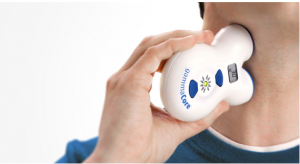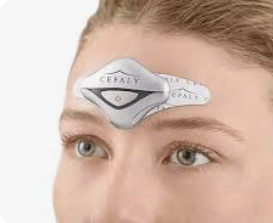If you think you have migraine (or any other type of ongoing headache), discuss your symptoms with your primary care physician (PCP) first. They may be able to diagnose the condition and start treatment, though most don’t have enough of the proper training to handle more than routine cases. As a result, your PCP will probably refer you to a general neurologist or a headache specialist for follow-up.
The specialist diagnoses migraine after taking a complete medical and family health history and asking you a lot about your symptoms, including:
- What symptoms do you experience during each phase of migraine?
How severe are the symptoms?
How long do symptoms last?
Do you experience an aura preceding the pain?
How does the pain feel (i.e., shooting, throbbing, aching), and where is it located?
Does anything make your headache better or worse? - How long does it take you to get back to normal?
- Do any of the symptoms affect your daily life?
In addition, the doctor performs a physical exam, a neurological exam, and may also order blood tests and imaging tests (e.g., a CT scan or an MRI) to make sure nothing else can account for your headache. An electroencephalogram (EEG) can also help rule out other conditions.
If the doctor can’t find any other condition to explain your symptoms and diagnoses you with either episodic or chronic migraine, the discussion moves to treatment.
There are two types of treatment: preventive and abortive. Preventive treatment is something you take or use every day to prevent a migraine attack from starting up. Abortive (or rescue) treatment is something you take or use at the first sign of an attack to, hopefully, prevent the attack from progressing.
Both the preventive and abortive treatments can be broken down further into two categories: medication and neuromodulators.
Medication
Until recently, most preventive and abortive medications used were drugs repurposed from other conditions that, by chance, also worked on one or more of the migraine pathways in the brain.
Some of the common preventive migraine medications include:
- Antiseizure medications (valproic acid, topiramate)
Beta-blockers (atenolol, propranolol, nadolol)
Calcium channel blockers (verapamil)
Tricyclic antidepressants (amitriptyline, nortriptyline, doxepin)
Serotonin and norepinephrine reuptake inhibitors (venlafaxine, duloxetine)
Some of the common abortive medications include:
- Triptans (5-hydroxytryptamine)
Ditans (lasmiditan)
Dihydroergotamine (DHE) (prochlorperazine)
Antinausea medications (metoclopramide, promethazine)
Medications come in different forms:
- An injection under your skin (subcutaneous)
An oral medication
A nasal spray
Through an IV (intravenously)
Suppository
The doctor weighs the risks and benefits of each type of medication before choosing one or more to manage your symptoms. As with any medication, you need to carefully follow their instructions on how to use these safely.
It’s only been in the last few years that research into the mechanisms of migraine has turned up new, migraine-specific classes of drugs. For preventive use are the calcitonin gene-related peptide (CGRP) agonists. These are monoclonal antibodies that prevent the CGRP protein from triggering the cascade that leads to a migraine attack.
The first group of anti-CGRPs released were Aimovig®, AJOVY®, and Emgality®. They come as a subcutaneous injection self-administered once a month. Almost 60% of migraine patients treated with these drugs experienced a ≥ 50% reduction in monthly migraine days at 12 weeks compared to control subjects. Unfortunately, that means over 40% didn’t see that improvement.
For abortive use are a group of short-chain proteins called gepants and ditans, that dock with the CGRP receptor, preventing CGRP from initiating pain signals. Gepants and ditans come as oral pills or dissolvable tablets, not injectables like the monoclonal antibodies. They target very specific receptors on sensory nerves that can resolve migraine symptoms like sensory sensitivity and nausea. Because of their specificity, they come with fewer side effects than the older drugs.
Neuromodulators
The American Migraine Association explains the three noninvasive neuromodulation devices currently FDA-approved for both preventive and abortive treatment.
Transcutaneous supraorbital neurostimulator
Image from American Migraine Foundation
This device is known more commonly as the Cefaly, and it uses electrodes for stimulation. Patients place the electrodes on their forehead, connect the device, and turn it on. It stimulates the supraorbital nerves, which transmit the device’s signal to the brain.
Preventative treatment with the Cefaly lasts for 20 minutes daily. Acute treatment, which uses a different setting on the device, lasts one hour. It takes about three months to determine if the device is effective at preventing migraine attacks.
You buy the device outright, and it’s the only one available without a prescription.
Single Pulse Transcranial Magnetic Stimulator device (SpringTMS or sTMS)
This device simulates nerves using a magnet rather than electrical pulses. You place it on the back of your head, and the device delivers a magnetic charge in about one second. You can rent it in three-month increments.
The preventive dose is four pulses twice daily, with as-needed extra pulses for acute treatment up to 17 pulses per day. Like the Cephaly, it takes about three months of daily use to determine if it has a preventative effect.
Non-Invasive Vagus Nerve Stimulator (nVNS)(aka gammaCore)

Image from electroCore®
This device uses electrodes to treat attacks of episodic cluster headache, but it’s also been FDA-approved for the acute treatment of migraine-related pain in adults. You put gel on the electrodes and then press the device to the side of your neck and turn it on.
It stimulates the vagus nerve in two-minute increments. Two cycles twice a day is the dose for preventive treatment; you can add additional cycles, as needed, for acute treatment.
You do need a prescription for the device, which you rent in three-month installments. Again, it takes about three months to determine effectiveness.
Neuromodulators are a viable alternative for those who either don’t respond to the medications or have unwanted side effects.


Leave a Reply